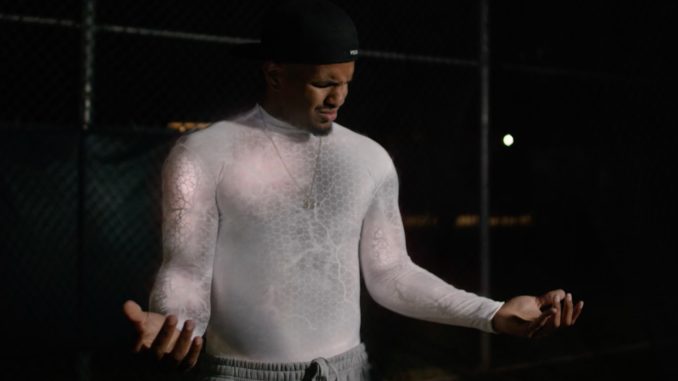
Now batting: Iron Man.
That might seem far-fetched, or a Stark possibility to sports purists. Others are embracing the notion of a Major League Baseball player strolling to the plate while grasping a bat and wearing some iteration of performance-enhancing armor.
It’s within the realm of possibility for the creators of a buzzing new baseball-themed television series. “On Deck” premiered as a 20-minute sizzle reel on May 13 at Theatre Box San Diego.
The show is the brainchild of ballplayer-turned-actor/producer Alex Bentley. He believes a plot about performance-enhancing wearable technology—told through the lens of authentic baseball storytelling—will resonate with both casual and hardcore fans of the game.
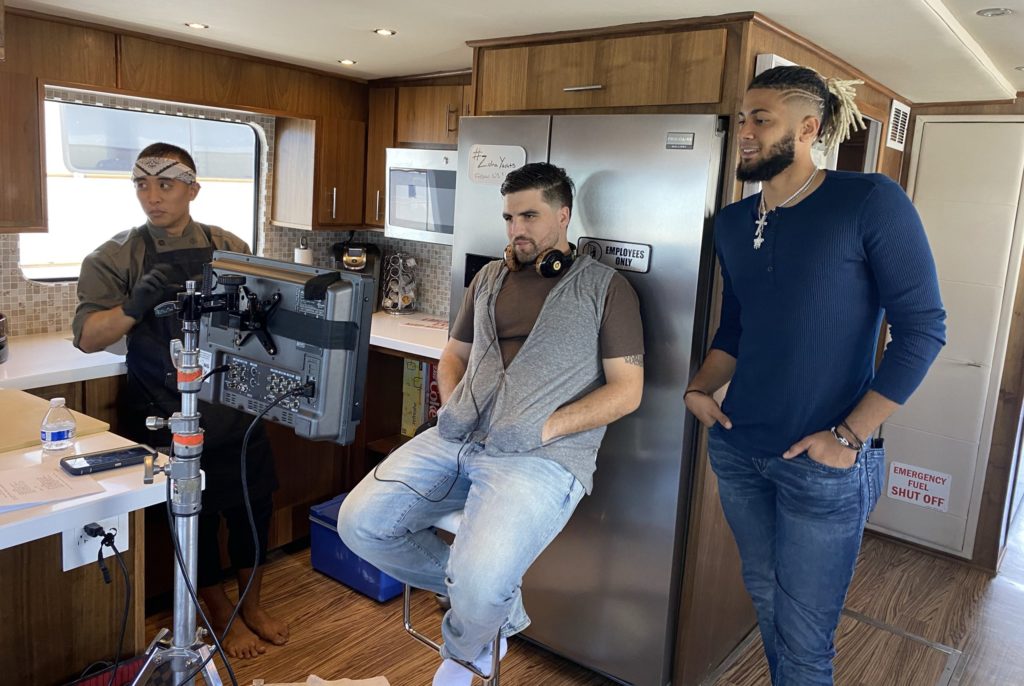
Bentley’s series is about minor leaguers struggling to get called up to the bigs. The show is bolstered by high-profile cameos by MLB poster boy Fernando Tatis Jr., former major leaguers Jerry Hairston Jr., Harold Reynolds, Adam Jones and Tony Gwynn Jr., super-agent Scott Boras and Olympic star/pro softball pitching great Jennie Finch.
In the sizzle-reel sneak peek, an “On Deck” character summarizes the power of the performance-enhancing device central to the show:
“It’s a full-body sleeve created with my own tech called Cortex,” says a young scientist named D.J. “When activated, it sends these heat waves to spike a player’s blood flow and maximize their muscle pump. In under a minute. Unlimited stamina.”
Bentley freely admits the device is not based on any present-day scientific reality. It’s fantasy. However, his show is not about futuristic super heroes. It’s about above-average athletes trying to gain a competitive edge.
“Who’s to say how far away from reality this device might actually be?” Bentley asks.
Director Rick Wayne agrees it’s inevitable that the show’s plotline will pop up in real life.
“We’ve seen modifications of the human body in sports—and you have to ask what happens when this arrives?” says Wayne, founder of Underscore Films and a baseball aficionado.
Wayne stepped in to share the directorial load along with pilot director Ser’Darius Blain (who acted in the last two Jumanji movies).
“We look at these moments that pose the question: What is cheating?” Wayne says. “Is the Cortex part of a modified version of the game? Does this make the game better? We’ve taken a pop culture approach, where this is a little bit more Iron Man.”
The capability of the Cortex rises substantially above present-day technology, including devices MLB players are currently allowed to wear during games. Those devices measure, rather than enhance, performance.
“But at some point, some pitcher could have an exoskeleton arm,” Wayne says. “And is that cheating? Does that make the game better, or more entertaining? Is there a separate league for something like that? These are all questions we should be asking ourselves before it happens. We need to be prepared, because as we are seeing, technology catches up quick.”
The “On Deck” Origin Story
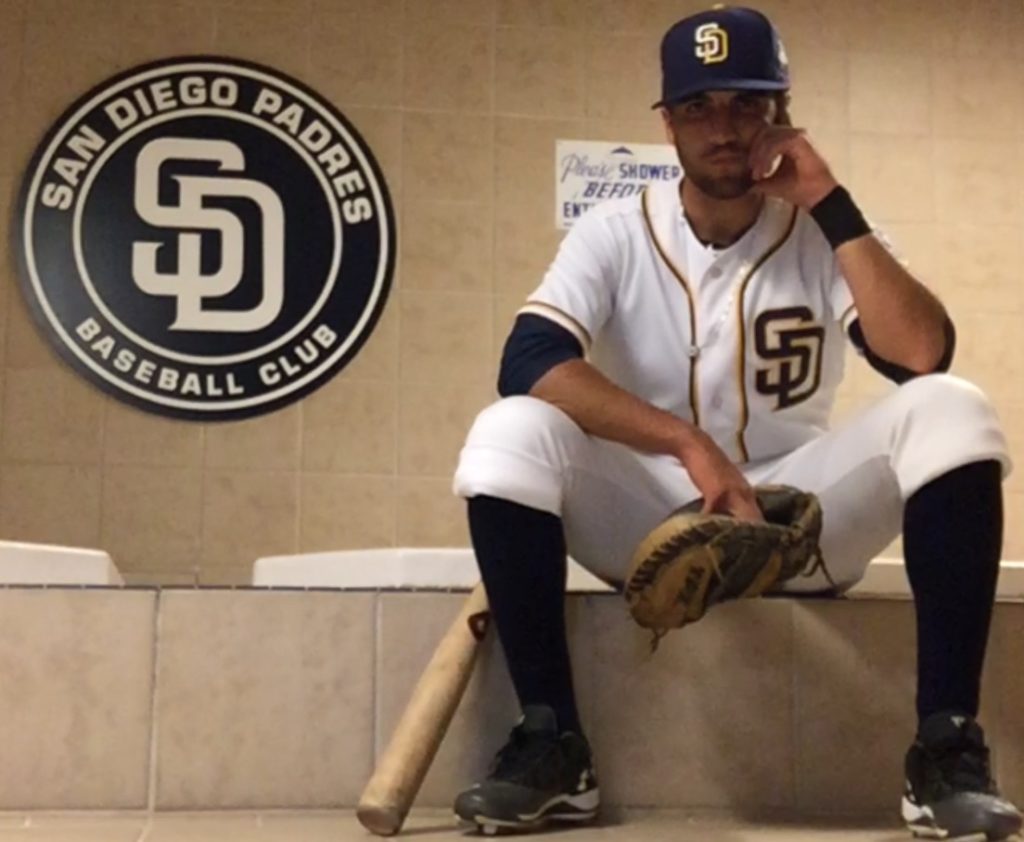
Growing up in San Diego forged Bentley as a life-long Padres fan. A catcher, he played in the Lake Murray Little League, and later, internationally for Team Israel.
Along the way, during an off-season workout with pitching coach Dom Johnson he caught fellow San Diegan Joe Musgrove, who this year became the first Padres pitcher to toss a no-hitter.
Bentley was also a catcher on a San Diego City College squad. At the same time, he was studying film/TV and was equally enamored with acting and playing ball.
In 2016, Bentley landed a spot in the short-lived Fox-TV series “Pitch.” That show focused on the (pretend) premiere of the first female pitcher in the major leagues. The series featured the Padres and was shot at San Diego’s Petco Park, about a mile away from City College.
Infinitely outgoing and gregarious, Bentley was hired as a walk-on. Then he strategically maneuvered himself into a speaking role. The good news: he got listed in the show’s credits. The bad news: Filming ran late and he missed a City College game.
Injuries hastened an end to his baseball career but America’s Pastime still inspires his professional calling. After working on “Pitch,” Bentley became dedicated to creating a highly authentic baseball show.
“I want all the baseball scenes to be based on reality,” he says. “I want fans and insiders to say, ‘Yes, that’s really how it is.’”
Bentley also wants “On Deck” to be a conversation starter.
“We’ll tackle issues that are current events in the game, and in society,” he says.
Where Baseball Meets Science

Here’s a conversation starter: At last count, there were eight wearable-technology devices approved by MLB for on-field usage. Four are deemed legal for in-game use.
During a game, a major league player can wear a biomechanical-focused Motus sleeve, a Zephyr bioharness for heart rate and breathing analysis, a Catapult GPS tracker or a WHOOP strap heart monitor.
As laid out in Attachment 56 of the current MLB Collective Bargaining Agreement (2016-21), these wearable devices may collect and/or analyze date related to a player’s health or performance.
Teams and players are not allowed to access any of the collected data while a game is in progress.
Sooner than later, it could be a relatively short bridge between those devices and the “On Deck” Cortex, says Stephanie Springer, senior knowledge scientist at Boehringer Ingleheim.
An organic chemist by training, Springer worked in the pharmaceutical industry for a decade before going to work as a patent examiner for the U.S. Patent and Trademark Office.
Her specialty at the USPTO was reviewing patent applications for things that interact with the human body.
A baseball fan, she was recruited by the The Hardball Times in 2017 to write science-driven stories about the game. Her clips include An Update on Wearable Baseball Technology and The Next Wave in Performance Enhancement.
Briefed on the “On Deck” storyline, Springer says, no, there is definitely no current base of reality for a performance-enhancing device like the Cortex.
“I love the idea,” she says. “But if there were anything like that, the performance enhancing aspect would probably be very minimal. Would somebody be able to hit the ball further? Probably not. Though, it’s a really interesting idea from an injury prevention perspective.”
Springer says there has been a great deal of research compiled from the information collected from the currently legal monitoring devices.
“Yes, you can monitor somebody’s heart rate in real time,” she says. “And, I can potentially monitor their blood glucose and lots of different biomarkers in the blood. That kind of technology isn’t far away. The question is, what do you do with that?”
According to Springer, there’s a gray area between performance enhancement and injury prevention.
“Personally, I would like to see MLB as an organization sign up for something like this and determine its best use,” she says. “I don’t like to see players getting hurt, or careers derailed by injury. I feel it would be in the best interest to approve a device like this. It might be how you frame it. If you say it’s to help with injury prevention, you might get more buy-in than saying it’s a performance-enhancing device.”
The View From MLB
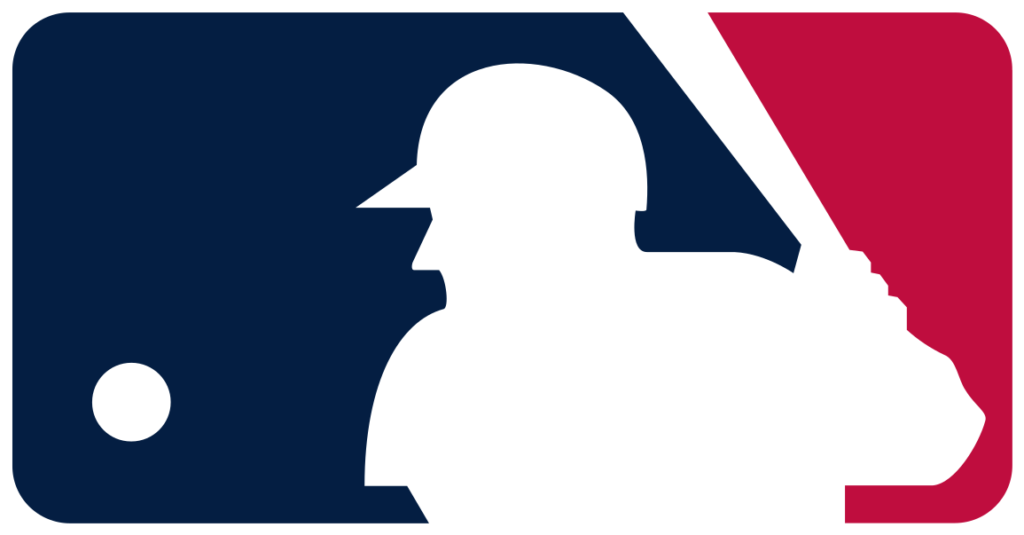
MLB has a list of banned performance-enhancing drugs. While there is not a similar list of banned devices, the league is covered by another section within Attachment 56 to the current CBA.
It lists approved devices—like the Motus sleeve—and states, “No Player may use a wearable technology in games or pregame activities (e.g. batting practice)…unless it has been approved by the Playing Rules Committee.”
Which means if you were in a fictional baseball TV show and you secretly wore a Cortex in a game, the reality is that you’d face a severe penalty from MLB.
Chris Marinak is MLB’s Chief Operations and Strategy Officer. He graciously agreed to walk the line between league rules and scripted TV.
First, he says MLB would do a safety test on any new wearable technology to make sure if it got hit with a bat or a ball it wouldn’t injure a player, or break off and possibly injure another player, umpire or fan.
“We would do that, and we would also take a performance, on-field-rules lens to it,” Marinak says. “Our Competition Committee would review it to see if this is something that is good for the sport, good for the game and helps with creating a more compelling product.”
He says the league would have a discussion to make sure that whatever the functionality of the device, that it would add to the entertainment value or competition value of the product on the field.
“If those were to be deemed to be valid, then yes, we would approve it and you could use it,” Marinak says. “But, I’m not aware of any technology that actually exists that does what you’re saying. And, I’m not sure that it’s on the horizon immediately.”
MLB is not, Marinak says, currently picking the brains of bioethicists about what is a fair or unfair advantage in the game via wearable technology.
“I wouldn’t say we’ve had active conversations about that,” he says “I just haven’t seen a lot of products that offer this supposed performance enhancement. A lot of them are data collectors. I haven’t seen one yet that makes you run faster, hit harder, throw faster, whatever. But the first time we find one, there will obviously be a conversation about what’s appropriate.”
A Player’s Point of View
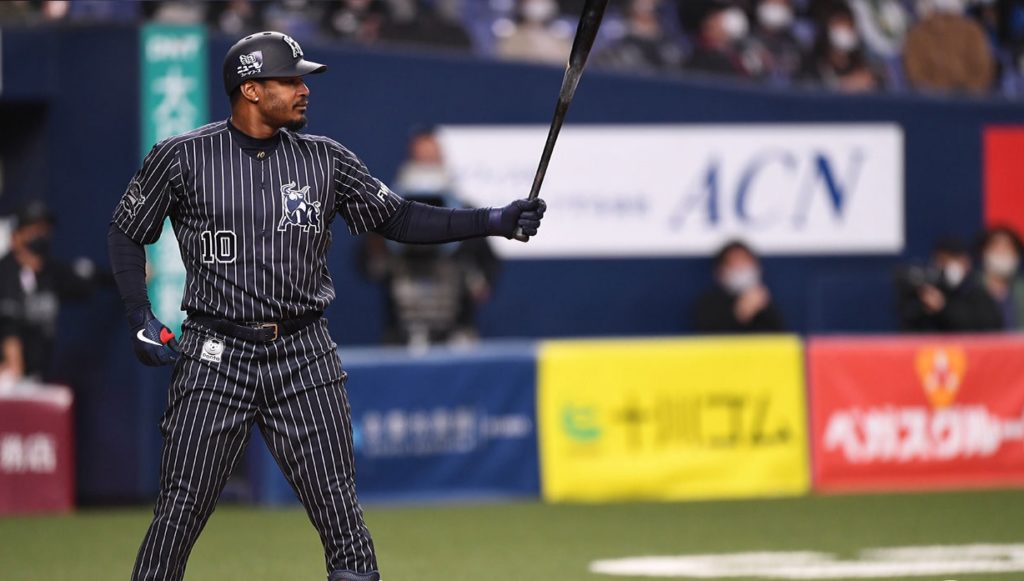
Adam Jones is one of the professional baseball players making a cameo in “On Deck.” A five-time All-Star, Jones played for a decade with the Baltimore Orioles, and also spent time with the Seattle Mariners and the Arizona Diamondbacks.
He’s currently in the last season of a two-year contract with the Orix Buffaloes of the Japanese baseball league (Nippon Professional Baseball).
Jones, who was born in San Diego, met Bentley while he was collecting footage for the TV show—by crashing the 2019 MLB Winter Meeting at the Hilton San Diego Bayfront.
“Alex told me what he was doing and I thought it was a cool story,” Jones says.
Like many professional players, Jones is wary of vast amounts of data collected by wearable technology. There’s a concern that if the data suggests an injury or a decline in performance it can be used against a player in contract negotiations.
Indeed, the subject caused enough consternation to prompt inclusions in the CBA regulating that player data remains confidential.
Jones thought the Cortex concept was “a little weird at first,” but then warmed to the idea.
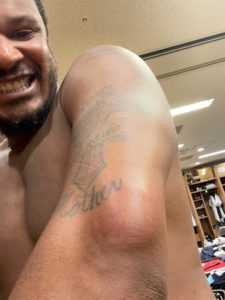
“Especially with the superhero things going on right now, I think it’s super cool that you could get superpowers in baseball,” he says. “Who doesn’t want super-strength? Or, who doesn’t want a super-eye? And, who doesn’t want super-speed or the ability to hit a baseball out at will, like in video games?”
Likewise, as a 35-year-old player who’d love to secure a spot on the USA Baseball Team for the Olympics (scheduled to be held this year in Japan), Jones is down with the injury-prevention aspect of the Cortex.
Oh, man, if I could activate a button and make myself feel great, I would want to press it and do it,” he says. “It’d be like getting the Tom Brady gene. Or the Cal Ripken Jr. gene. I’d push the button and feel like Mike Trout. With the strength of Giancarlo Stanton. And the speed of Ronald Acuña Jr.”
Jones admits that enhancements are a slippery slope in baseball.
“But I think the concept of having something that can help players stay healthier and stay on the field is good,” he says. “I think a lot of people, especially fans, would be open to it.”
Bentley and his “On Deck” crew hope so. For now, stay tuned, and periodically check your local listings. J&J

this is sick
We’re going to have to check this out! My husband loves baseball. (Is there anyone who DOESN’T love baseball? So cool.
As an engineer, I love the science perspective, talking about what’s realistic in this day and age!
This was really interesting for me as I know nothing about baseball so enjoyed learning a bit about it!!
This does sound pretty cool to be honest. Loving this concept and the show sounds great too.